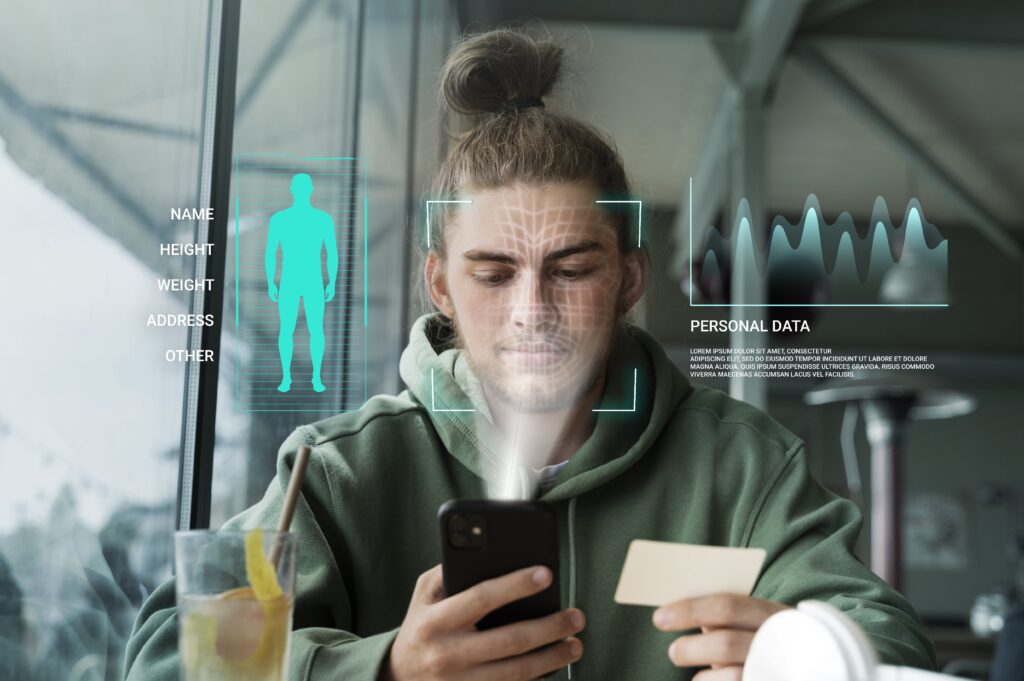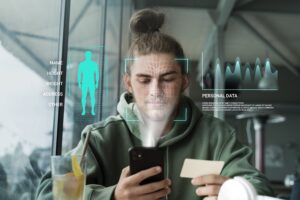In today’s digital age, businesses are on a mission for fresh, exciting ways to connect with their customers and craft unforgettable, personalized journeys. One such approach that is gaining traction is hyper-personalization. This cutting-edge strategy goes beyond traditional personalization techniques that you may be using now by leveraging advanced technologies to create highly individualized interactions that cater to the specific needs and preferences of each customer.
Understanding Hyper-Personalization
Hyper-personalization is a data-driven marketing strategy that uses artificial intelligence (AI), machine learning, and big data analytics to deliver personalized content, products, and services to customers on a one-to-one basis. Unlike traditional personalization, which often relies on segmentation and basic demographic information, hyper-personalization takes into account a wide range of data points, including browsing history, purchase behavior, social media activity, location data, and even real-time interactions.
By analyzing this wealth of data using sophisticated algorithms, businesses can gain deep insights into individual customer preferences, behaviors, and intent. This allows them to create highly targeted and relevant experiences that resonate with customers on a personal level. From personalized product recommendations and tailored marketing messages to customized pricing and individualized customer service interactions, hyper-personalization enables businesses to deliver seamless and engaging experiences across all touchpoints.
Case in Point 1: Amazon has revolutionized online retail with its hyper-personalized marketing approach. The company leverages AI and machine learning to create custom and targeted experiences for customers based on their unique preferences, browsing history, and purchase behavior
Benefits of Hyper-Personalization
The shift towards hyper-personalization offers benefits for both businesses and customers. For businesses, it can lead to increased customer loyalty, higher conversion rates, improved customer satisfaction, and ultimately, higher revenues. By delivering personalized experiences that meet the unique needs of each customer, businesses can foster stronger relationships and build trust with their audience.
Moreover, hyper-personalization can help businesses differentiate themselves in a crowded marketplace by offering a level of customization and relevance that sets them apart from competitors. This can lead to increased brand awareness and positive word-of-mouth referrals as satisfied customers share their personalized experiences with others.
Case in Point 2: HSBC, a London-based bank, utilizes artificial intelligence to predict customer preferences for redeeming accumulated points and optimize rewards through customized email offers. This approach resulted in an impressive 70% redemption rate for customers who received AI-recommended content.
For customers, hyper-personalization means receiving more relevant content and offers that align with their interests and preferences. This not only enhances the overall customer experience but also saves time and effort by eliminating irrelevant information or products. Customers are more likely to engage with brands that understand their individual needs and provide tailored solutions that address their specific pain points.
Case in Point 3: Starbucks transitioned to hyper-personalization by creating 400,000 email variants per week, personalized offers in their app, and recommendations within the app based on individual preferences and past purchases. This approach significantly improved customer engagement and loyalty. (See below on how this is used to measure success of hyper-personalization.)
Challenges of Hyper-Personalization
While hyper-personalization holds great promise for improving customer experiences, it also presents several challenges that businesses must navigate. One of the key challenges is data privacy and security concerns. As businesses collect vast amounts of personal data to power their hyper-personalization efforts, they must ensure that this data is handled responsibly and in compliance with regulations such as GDPR.
Another challenge is the need for robust technology infrastructure and skilled personnel to implement hyper-personalization effectively. Businesses must invest in AI-powered tools, data analytics platforms, and skilled data scientists to collect, analyze, and act on customer data in real-time. Additionally, they must strike a balance between automation and human touch to ensure that personalized interactions feel authentic and not overly intrusive.
Case in Point 4: Stitch Fix, an online retail platform, provides customers with personal stylists who curate products based on individual style preferences determined through surveys. This hyper-personalized experience enhances customer satisfaction and loyalty.
Future Implications
Looking ahead, the future of customer experiences is poised to be increasingly shaped by hyper-personalization. As AI technologies continue to advance and consumer expectations evolve, businesses will need to embrace hyper-personalization as a core strategy for engaging with customers in meaningful ways.
We can expect to see more sophisticated AI algorithms that can predict customer behavior with greater accuracy and deliver personalized recommendations in real-time. Virtual assistants powered by AI will become more prevalent in providing personalized assistance and support across various channels.
Furthermore, the rise of the Internet of Things (IoT) will enable even deeper levels of personalization by connecting smart devices to create seamless omnichannel experiences. For example, smart homes equipped with IoT sensors can adjust lighting, temperature, music preferences based on individual user preferences automatically.
Case in Point 5: Naked Wines employs hyper-personalization by collecting customer reviews to personalize the wine tasting and purchasing experience. By tailoring recommendations based on user feedback and purchase history, the company enhances customer satisfaction and retention.
How to Measure the Success of Hyper-Personalization
Companies measure the success of their hyper-personalization efforts through various metrics that demonstrate the value and impact of personalized experiences on customer engagement, retention, and revenue growth. Here are some key ways companies have measured the success of their hyper-personalization strategies:
- Revenue Growth. McKinsey reports that hyper-personalization can lift revenue by 10-15% on average, with company-specific revenue ranging from 5-25%. Personalization boosts companies’ growth rates by 6-10% on average and improves marketing efficiency, sales, and loyalty, all contributing to ROI when investing in a personalization tool.
- Customer Retention. Companies that personalize B2B experiences report increased market share, with personalization playing a key role in customer retention. Hyper-personalization can lead to improved customer loyalty, repeat purchases, and longer customer lifetime value.
- Market Share and Customer Success. Companies that excel at personalization generate 40% more revenue from those activities than average, demonstrating the impact of personalized interactions on business outcomes. High-performing sales teams are more likely to employ guided selling or sales intelligence tools to augment productivity, indicating the effectiveness of hyper-personalization tools in enhancing sales performance.
- Customer Engagement. Starbucks transitioned to hyper-personalization by creating 400,000 email variants per week, personalized offers in their app, and recommendations within the app based on individual preferences and past purchases. This approach significantly improved customer engagement and loyalty.
These metrics showcase how companies have successfully measured the effectiveness of their hyper-personalization efforts in driving revenue growth, improving customer retention, increasing market share, enhancing customer engagement, and ultimately delivering personalized experiences that resonate with their audience.
Conclusion
Hyper-personalization represents a paradigm shift in how businesses interact with their customers. By leveraging advanced technologies to deliver highly tailored experiences at scale, businesses can create deeper connections with customers and drive long-term loyalty. As we move towards an increasingly digital future, embracing hyper-personalization will be essential for staying competitive in the ever-evolving landscape of customer experiences.
References
- Monetate. (n.d.). 12 Hyper Personalization Statistics That Demonstrate Value. Monetate. https://www.monetate.com/resources/12-hyper-personalization-statistics-that-demonstrate-value/
- Wedia Group. (2022, October 19). 10 examples of hyper-personalized marketing. Wedia Group. https://www.wedia-group.com/blog/10-examples-of-hyper-personalized-marketing
- Retail Boss. (2023, March 19). Hyper-Personalization in Retail: 7 Examples of Retailers Doing It Right. Retail Boss. https://retailboss.co/hyper-personalization-in-retail-7-examples-of-retailers-doing-it-right/
- Apiway. (2024, February 18). Top 5 Examples of Brands Leveraging Hyper-personalization in Retail. Apiway. https://apiway.ai/community/articles/841-top-5-examples-of-brands-leveraging-hyper-personalization-in-retail
- Adobe Business. (2022, December 13). Scale up with hyper-personalization. Adobe Business Blog. https://business.adobe.com/blog/how-to/scale-up-with-hyper-personalization
- MoEngage. (n.d.). Examples of Personalization. https://www.moengage.com/learn/examples-of-personalization/
- HubSpot. (n.d.). Marketing Personalization Examples. https://blog.hubspot.com/marketing/marketing-personalization-examples
- BuzzBoard. (2023, November 24). Measuring the Success of Hyper-Personalization Strategies in B2B Sales. https://www.buzzboard.ai/measuring-the-success-of-hyper-personalization-strategies-in-b2b-sales/
- McKinsey & Company. (2021, November 12). The value of getting personalization right—or wrong—is multiplying. https://www.mckinsey.com/capabilities/growth-marketing-and-sales/our-insights/the-value-of-getting-personalization-right-or-wrong-is-multiplying
- Business2Community. (n.d.). 5 Examples of Successful Hyper-Personalization That Worked. https://www.business2community.com/digital-marketing/5-examples-of-successful-hyper-personalization-that-worked-02440907






